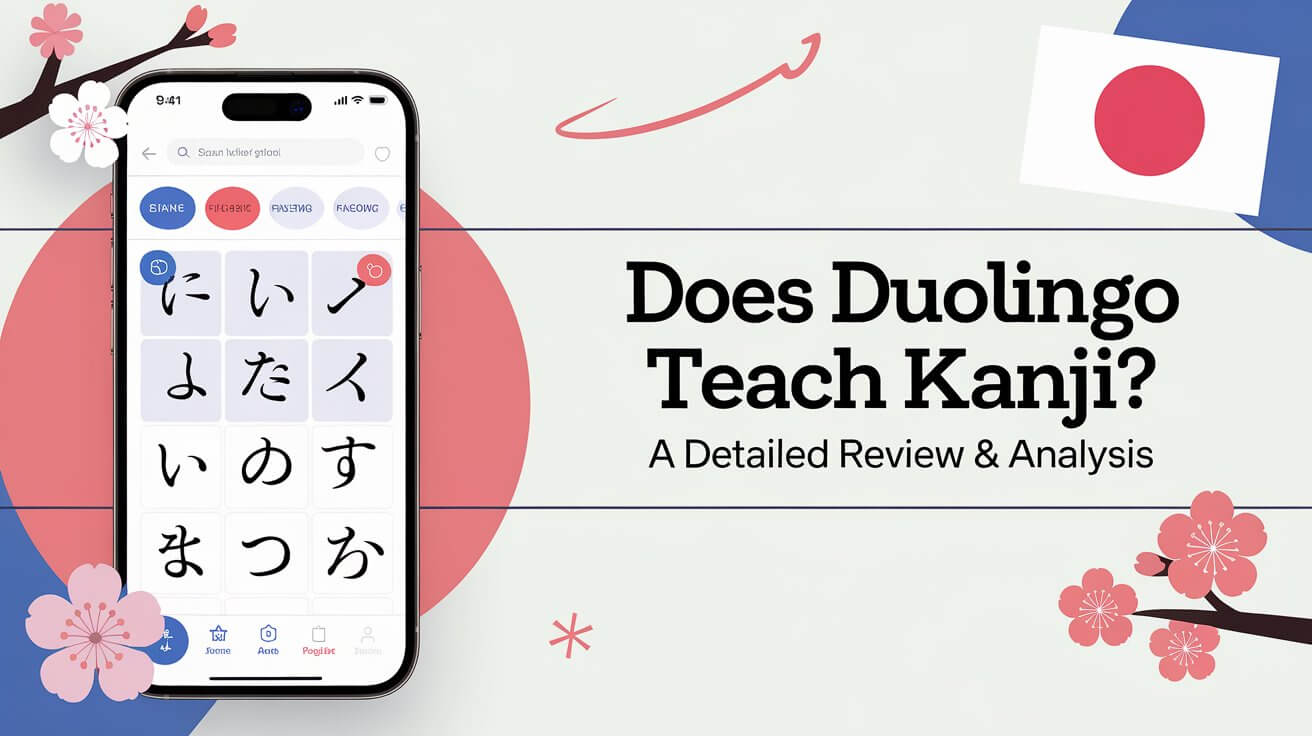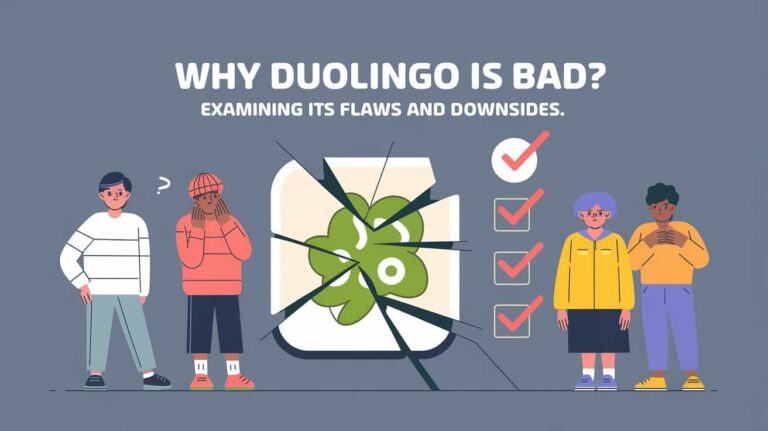Duolingo, a well-known app for learning languages, has a detailed Japanese course. It helps learners explore the complex Japanese writing systems. The course includes kanji, hiragana, and katakana, which are key to mastering Japanese.
Key Takeaways
- Duolingo’s Japanese course teaches all three Japanese writing systems: hiragana, katakana, and kanji.
- Hiragana and katakana are introduced early, while kanji is gradually incorporated throughout the course to prevent overwhelming learners.
- The course aligns with international Japanese language standards and includes exercises to help learners understand kanji components and distinguish similar-looking characters.
- Duolingo offers romaji support for those seeking additional assistance in reading Japanese.
- The course covers a significant number of kanji characters, including those on the JLPT N5, N4, and some N3 levels.
Three Japanese Writing Systems on Duolingo
The Japanese language has three main writing systems: hiragana, katakana, and kanji. Duolingo, a popular app for learning languages, teaches these scripts step by step in its Japanese course.
Hiragana Characters and Usage
Hiragana is the basic script, with 46 characters that show simple sounds. It’s used for small words, grammar, and changing verb forms. Duolingo starts with hiragana to help beginners get used to the Japanese writing system and how to pronounce words.
Katakana Characters and Purpose
Katakana looks like hiragana but is for special words. It’s used for foreign words, sounds, scientific terms, and to stress certain words. Duolingo teaches katakana early in the Japanese course because it’s key to the language.
Kanji Characters and Their Role
Kanji comes from Chinese characters and means things, not sounds. They’re used for big words like nouns, verbs, and adjectives. Duolingo introduces kanji later, after learners know hiragana and katakana well.
By teaching all three systems, Duolingo’s Japanese course helps learners understand the Japanese language deeply. It prepares them for talking and writing in Japanese.
Does Duolingo Teach Kanji?
Yes, Duolingo teaches kanji in its Japanese course. Kanji is the third writing system in Japan. It’s introduced slowly in lessons to help learners get used to these complex characters.
As you move through Duolingo’s Japanese lessons, you’ll learn new kanji characters. These are available for practice in the kanji tab. The app teaches you about the shapes, uses, and meanings of these symbols.
Duolingo is great for beginners and those who want to improve their kanji skills. It teaches kanji along with hiragana and katakana. This helps you learn all three scripts of the Japanese writing system.
| Learning Progress | Kanji Mastery |
|---|---|
| 40-day streak on Duolingo | 50% of kanji learned |
| 100% of hiragana learned | Recommended 1-2 hours of daily learning |
| 50% of katakana learned | Approximate timeframe of 200 days for Japanese trip preparation |
Duolingo’s Japanese course uses interactive tools and exercises. It helps you master duolingo kanji lessons. This way, you’ll be on your way to learning kanji on duolingo and becoming proficient in kanji instruction on duolingo.
“Duolingo’s Japanese course has been an invaluable tool in my journey to learn the language. The gradual introduction of kanji, coupled with the engaging lessons and practice exercises, has made it a truly effective way to learn kanji on duolingo.”
Duolingo’s Japanese Character Learning Features
Duolingo is a top app for learning languages. It has special features for the Japanese writing system. You can learn kanji, hiragana, and katakana through fun games and exercises.
Interactive Character Charts
The Japanese course on Duolingo has easy-to-use tabs. These tabs show interactive character charts for each script. As you learn, the characters light up, showing your progress.
Tracing and Writing Exercises
Duolingo helps you practice writing characters with tracing exercises. It teaches the right stroke order and shape. You also get to try freehand writing exercises and puzzles to learn kanji better.
Component-Based Learning System
Duolingo teaches kanji by focusing on its parts. This way, you learn to recognize patterns. It helps you understand and appreciate the Japanese writing system more.
Duolingo makes learning Japanese fun and effective. It’s great for all learners, from beginners to those who want to improve their kanji skills.
Japanese Writing Practice Methods
Learning the Japanese writing system can be tough. But, the Duolingo Japanese course makes it easier. It has a special hiragana and katakana tab for beginners. This helps users start with the basics of Japanese writing.
For a bigger challenge, learners can try writing without romaji (Romanized) help. This makes them focus more on remembering hiragana and katakana. It’s a big step towards becoming better at writing Japanese.
Duolingo also has fun activities to help improve writing skills. Users can copy lyrics from Japanese songs or read labels on Japanese snack packages. They can even use Google Street View to spot characters in real life. These activities make learning more fun and practical.
“To become proficient in Japanese, it would take approximately 91 days and 16 hours or about three months of continuous study.”
While Duolingo’s japanese writing practice tools are great, more practice is needed to master kanji characters. Kanji are a key part of Japanese writing. To get better, combining Duolingo with kanji learning apps or online tools is a good idea.
Kanji Components and Visual Recognition
Learning the Japanese writing system can be tough, but Duolingo makes it easier. It teaches kanji in a step-by-step way. This helps learners see patterns and similarities in different characters.
Duolingo’s kanji lessons use visual exercises to teach new kanji. Learners get to see common components in many characters. This helps them understand how these parts come together in Japanese writing.
Duolingo also uses smart ways to help remember new kanji. It links kanji to things learners already know. This makes learning kanji fun and easy to remember, thanks to learning kanji through gamification.
“Duolingo’s approach to teaching kanji is a game-changer. By focusing on the building blocks of the characters, I was able to quickly grasp and retain new kanji with ease.”
Duolingo’s methods are great for anyone learning kanji. It uses visual recognition, pattern finding, and memory games. These tools help learners on their way to becoming fluent in Japanese.
Limitations of Duolingo’s Japanese Course
The duolingo japanese course is a great way to start learning Japanese. But, it has some downsides. It doesn’t give detailed explanations of complex grammar rules. Users say it doesn’t cover the subtleties of Japanese grammar or its writing systems well.
The kanji instruction on duolingo might not be enough for those aiming for advanced levels. The course teaches a lot of vocabulary and kanji, about 3200 words and 1350 kanji. But, the JLPT N3 exam requires more, around 3700 words and 650 kanji. This means Duolingo might not fully prepare you for such tests.
Another issue is the chance of getting wrong or unnatural translations. Duolingo has a good score of 3.8 out of 5.0. Yet, some users find the translations not always accurate or natural. This can make it hard for learners to grasp the language’s nuances.
Common Questions
Does Duolingo teach kanji?
Yes, Duolingo teaches kanji in its Japanese course. It introduces kanji characters slowly, mixing them into words and sentences. You can practice kanji through fun charts, tracing, and writing.
How does Duolingo introduce the Japanese writing systems?
Duolingo teaches Japanese using three writing systems: hiragana, katakana, and kanji. It starts with hiragana, then katakana in Section 1. Kanji is introduced later in the course.
What are the features of Duolingo’s Japanese character learning?
Duolingo has interactive charts for hiragana, katakana, and kanji. These charts show your progress. The app also has tracing, freehand writing, and puzzles to help you learn character shapes.
How does Duolingo teach kanji?
Duolingo breaks down kanji into parts. This helps learners see patterns and similarities. It makes learning kanji easier. The app also uses memory tricks and learning through sentences and stories.
What are the limitations of Duolingo’s Japanese course?
Duolingo’s Japanese course is great but has some limits. It doesn’t explain grammar deeply, especially for complex topics. Some translations might not sound natural. The app’s fun approach might not be enough for advanced learners who want more detailed lessons.







